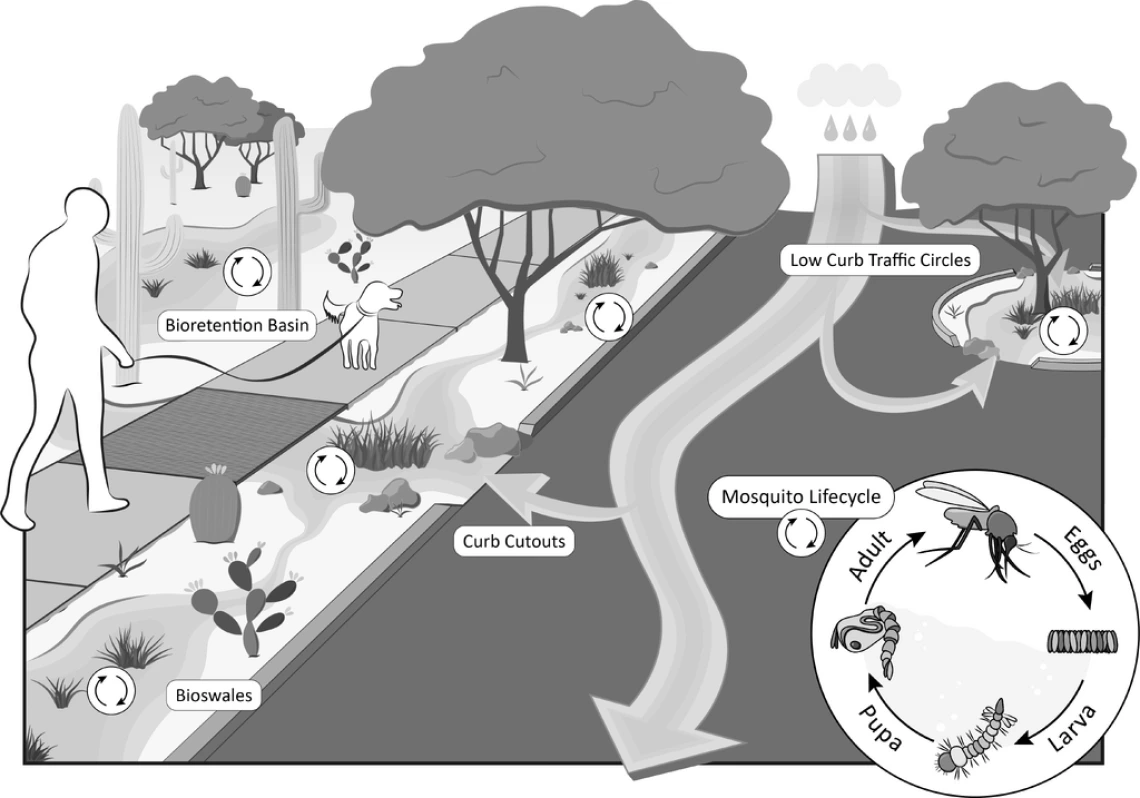Public Health Corner: February 2024

Schematic of green stormwater infrastructure with generic mosquito life cycle embedded. Green stormwater infrastructures (GSIs) where stormwater pools for longer periods may become a source for mosquito emergence. Image credit: Erika Lynn Schmidt.
Welcome to the Public Health Corner, a new quarterly section in the Southwest Climate Outlook dedicated to exploring the intersection between climate change and public health in Arizona and New Mexico! In this section, we will dive into the various health impacts of climate change that are affecting our communities and explore strategies to mitigate and adapt to these challenges.
It is starting to get warmer... summer sun, hikes in the mountains, and relaxing evenings on the patio... well, relaxing until those nasty ankle-biters attack that is! With heat planning for this summer in full swing, we focus on the impacts of vector borne diseases in Arizona and New Mexico. Be they mosquitoes, fleas, or ticks, the warm weather gets these potential disease vectors moving about. While it can get too hot for these vectors to thrive, generally warmer temperatures mean faster development which in turn usually leads to larger populations. Larger populations of vectors can be associated with increased entomologic risk, that is the risk of encountering a potentially infected vector. Further, because of this association between vectors and climate and the increasing temperatures we are observing, most predict that vectors will increase and their associated diseases might too!
In our region, mosquito-borne West Nile virus is now endemic meaning we expect to see it every year with some years worse than others. Flea-borne plague happens occasionally in the higher elevations in New Mexico. The effects of tick-borne Rocky Mounted Spotted Fever can be devastating – especially among children (<10 years of age) who are five times more likely than adults to die from RMSF. Forecasts usually indicate a risk for the emergence of new diseases into our region, with mosquito-borne dengue probably being the most watched.
So how do we protect ourselves against the increasing threat from vector borne disease? CLIMAS researchers have been focusing on two aspects: vector-wise adaptations and education. Drs Heidi Brown and Ladd Keith worked to understand what puts green stormwater infrastructure at risk for growing mosquitoes and found that most across the city of Tucson were quickly drying out after a rain event. No pooling water – less risk of mosquitoes! A collaboration between the faculty at the College of Medicine and Public Health has led to the generation of free online trainings and education material for the health impacts of climate especially vector borne diseases. We continue to work toward resilient climate solutions that work in your neighborhood!
Join us next quarter in the Public Health Corner as we explore the health impacts of climate change in Arizona and New Mexico, and discover ways we can all work together to create a healthier and more resilient future.

